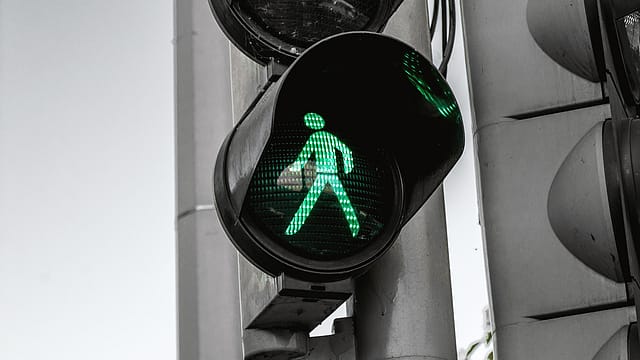Heads up, please: Technology for pedestrian safety
ADVERTISEMENT

September 1, 2019, saw a massive hike in penalties for road traffic violations across a set of offences. The government contends that the newly implemented Motor Vehicles Act would enhance road safety for both vehicle drivers and pedestrians. Driving requires training as well as technique and even though pedestrians are exposed to high risks, walking doesn't. According to the Ministry of Road Transport and Highways (MoRTH), 56 pedestrians died on Indian roads every day in 2017; death by road accidents accounted for 13.8% of the total fatalities in that year. With most fatalities attributed to the fault of vehicle drivers, pedestrians have the least control over their safety and are, perhaps, the most vulnerable of all road users. Unfortunately, from a risk mitigation perspective, even the most alert drivers may not be able to identify and address unpredictable pedestrian behaviour, such as jaywalking, gait, etc.
It is fairly common to see people’s noses buried in their phones these days. Nomophobia, the addiction to a smartphone, is increasingly affecting people’s attention and behaviour. David Greenfield, professor of psychiatry at the University of Connecticut, contends that cellphone addiction works just like other compulsions since it involves the dysregulation of dopamine. Every notification entails a certain dopamine elevation. Dopamine craving causes the human brain to constantly check one’s phone. As a result, phone usage, often, happens instinctively. Walking seems like an automatic process and is hence a passive activity, which is why people tend to combine it with other activities, shares Eric Lamberg from Stony Brooks University. But areas in the brain that control executive function and attention are necessary for walking, he adds. The human brain has evolved to focus its attention on primarily one task at a time; this phenomenon is termed ‘inattention blindness’ by psychologists. Simply put, if a pedestrian is seeing his/her phone, s/he is not paying attention to the road. Pedestrians may be overestimating their peripheral vision and their ability to multitask.
Text-walking is increasingly emerging as a major safety threat for pedestrians. Not only is text-walking common, but it is also dangerous. Dietrich Jehle, professor of emergency medicine at the University at Buffalo, says that distracted walking might lead to more injuries per mile than distracted driving. Steven D. Levitt, in his popular non-fiction book Freakonomics, mentioned that every mile walked while drunk, turns out to be eight times more dangerous than drunk driving. In India, a study conducted by SaveLIFE Foundation found that nearly 20% of respondents were either close to crashing or crashed their vehicles because of compulsively using their phones while driving while 43% had either witnessed such instances or held knowledge of them. Piyush Tewari, founder of SaveLIFE Foundation, expressed his concern over increasingly distracted drivers. Distractions aren’t restricted to communication; vehicle drivers also seek entertainment, he adds. This makes the situation worse for pedestrians because this is perceptibly a passive activity. While distracted pedestrians have significantly lower step lengths and are less stable in walking, they still need to adjust their step frequency and often fumble when responding to approaching vehicles, found a study conducted by the University of British Columbia.
January 2026
Netflix, which has been in India for a decade, has successfully struck a balance between high-class premium content and pricing that attracts a range of customers. Find out how the U.S. streaming giant evolved in India, plus an exclusive interview with CEO Ted Sarandos. Also read about the Best Investments for 2026, and how rising growth and easing inflation will come in handy for finance minister Nirmala Sitharaman as she prepares Budget 2026.
Should India ban text-walking, like New Jersey and Hawaii? The verdict is equivocal since the intervention is recent. It did, however, meet some criticism. The opponents argue that the law is an example of government overreach and contravenes the personal freedom of citizens. Other cities have put in place measures to soften the blow for pedestrians. London has provided padded lamp posts while the German city of Augsburg has embedded traffic signals in the ground close to tram tracks to help the downward-looking pedestrians.
While there could be a softer, communication-oriented approach instituting safety campaigns against text-walking, India could learn from Germany and use a disruptive method to address text-walking, which is emblematic of our addiction to technology, by the use of technology, itself. Imagine a world where a vehicle sends a push notification to a text-walking pedestrian to give him a warning about an impending collision. What if the pole that you’re about to run into, gives you a heads-up? Given the current strides being made towards Internet of Things (IoT), that day is not really far.
The world is already testing vehicles that can sense their immediate environment and communicate with other vehicles, infrastructure, and mobile devices (connected cars). Vehicle to pedestrian/personal device (V2P) communication—a natural extension of this connectedness—offers a promise to reduce traffic collisions by 46%. Technology is increasingly being deployed by various private entities to improve road safety. But the government can equally leverage these disruptions and make necessary interventions to address road use behaviour. Ensuring pedestrian safety can become a shared goal for both technology and policy. With V2P being at a nascent stage in India, I2P (Infrastructure to Persons) communication could be prioritised for implementation. Under I2P, street infrastructure such as traffic signals and lamp posts could send safety warnings to pedestrians through push notifications. While the experience could be disturbing for pedestrians, saving lives should be of paramount importance. Besides, constant reminders could lead to a permanent behaviour shift.
Interventions listed above could be piloted under the Smart Cities Mission to measure their efficacy and, if successful, can be replicated at scale and be included in urban planning guidelines. While pedestrians should follow the ‘heads up, phones down’ rule, just in case they forget, technology should give them another chance.
Views are personal.
The author is a research associate with Urban Mobility Track at Ola Mobility Institute.
